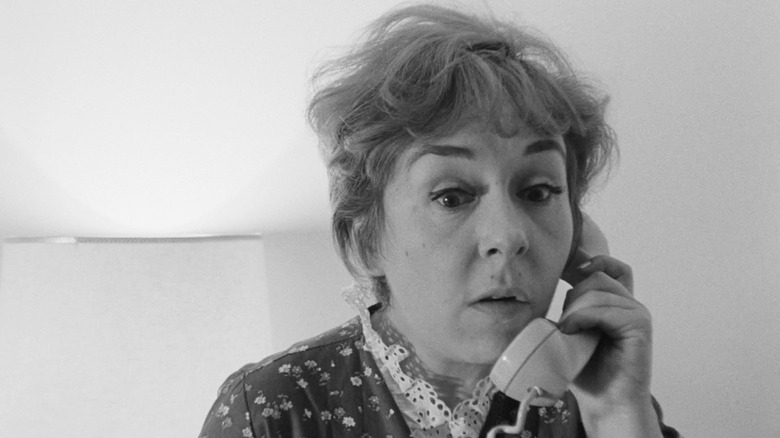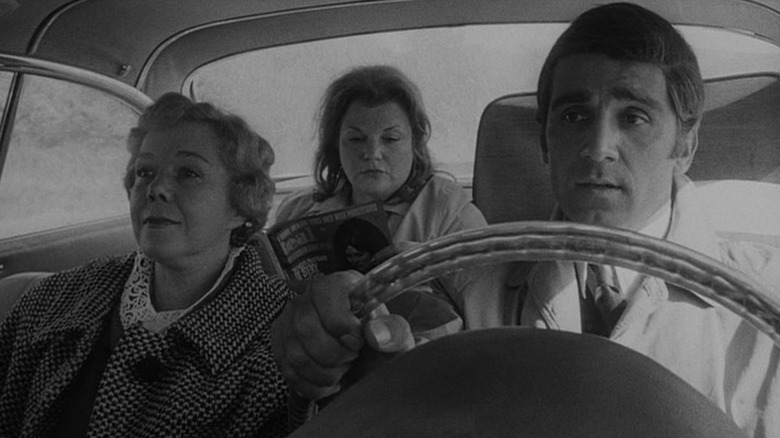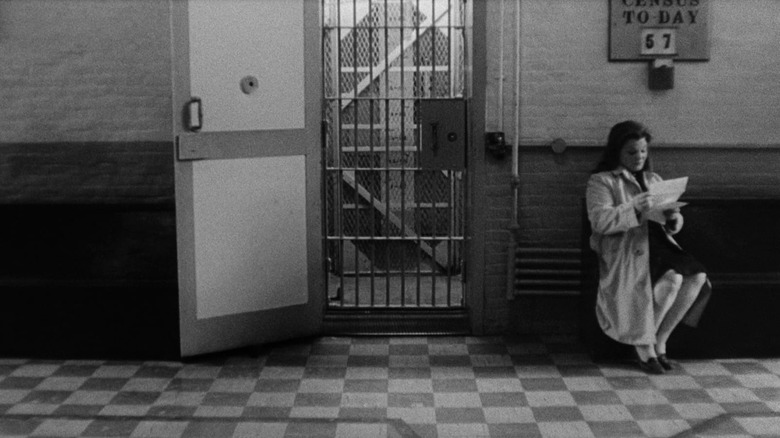Why Martin Scorsese Was Fired From One Of His First Ever Projects
Martin Scorsese is one of many directors who earned his stripes working for legendary B-movie producer Roger Corman, and 1972 saw the release of his second picture, "Boxcar Bertha." Scorsese's friend and mentor John Cassavetes didn't mince words: "You just spent a year of your life making a piece of s**t. You're better than that stuff, you don't do that again."
Scorsese took the blunt advice onboard, declined an offer to make a Blaxploitation cash-in, and concentrated on making what would become his favorite movie from his career, "Mean Streets." Would he have become such a celebrated filmmaker otherwise? There's no way of knowing, but Scorsese might have been more deeply ensconced in exploitation territory by that stage if he hadn't been fired from one of his first ever projects: "The Honeymoon Killers."
Produced by Warren Steibel and written by opera composer Leonard Kastle (who would later receive sole credit as director), "The Honeymoon Killers" is a gritty low-budget indie picture based on the true crimes of Raymond Fernandez and Martha Beck — better known as the Lonely Hearts Killers after their murder spree in the late 1940s. Steibel and Kastle had no background in filmmaking, but they settled on adapting the true crime story after a wealthy friend stumped up an initial $150,000 budget to make whatever movie they chose.
Streamlining the story but sticking fairly close to the real-life case, "The Honeymoon Killers" stars Shirley Stoler and Tony Lo Bianco as the titular couple. We first meet Martha working as a nurse in Mobile, Alabama, where she lives with her elderly mother. She is initially enraged when her best friend Bunny applies to a lonely hearts club on her behalf, but that soon changes when she meets Raymond. The smooth-talker from New York City sweeps Martha off her feet and she isn't the least bit perturbed when he admits that he makes a living from conning lonely women out of their money. Her only condition is that he doesn't sleep with them. She packs her mom off to an old people's home and joins Raymond on his scams by posing as his sister, but her monstrous jealousy leads them from swindling to murder and, eventually, a date with the electric chair.
Steibel and Kastle had their insalubrious material, and now they just needed a director to shoot it. Enter Martin Scorsese — but his time on the project was very short-lived.
Why Martin Scorsese was fired from The Honeymoon Killers
After studying filmmaking at the Tisch School of the Arts in New York, Scorsese cast a young actor called Harvey Keitel in his first indie feature, "Bring on the Dancing Girls." The film showed enough promise to attract further investment for him to re-make it as "I Call First." It was well-received at the Chicago International Film Festival but there was a snag: Without buying the rights to the tunes on the soundtrack, the film couldn't be legally screened in commercial theaters. Scorsese needed more money to see his dream fully realized, which was when "The Honeymoon Killers" came along.
Scorsese enthusiastically took the job and planned the whole project in the style of his beloved French New Wave directors. His approach was over-meticulous for the scope of the project, however, taking way too much time trying to get the natural lighting and every detail just right. Steibel and Kastle were exasperated (via New York Times):
"There was a scene in which Ray takes the train to see Martha, and on the train he picks up a woman... We started with that, and I can't tell you how long and involved that thing became. We realized we'd have a film about the train and nothing else."
In another scene, Scorsese used up multiple takes shooting a beer can falling from Martha's shopping bag, a shot that was ultimately cut from the finished film. Kastle knew it wasn't going to work out:
"I realized the way he was doing it, that... we had $150,000 and we had seven weeks and that we would never, ever get through."
If anything, Scorsese was guilty only of trying to make "The Honeymoon Killers" a little too well given the limited resources, and he was released after just two weeks. Scorsese was magnanimous about the decision and later said: "[I had] been fired with pretty good reason... It was a 200-page script and I was shooting everything in master shots with no coverage."
Scorsese was first replaced on directing duties by Donald Volkman (whose only previous experience was making industrial films) before Kastle himself stepped in to complete the picture. Steibel, Volkman, and Kastle would never make another feature, while Scorsese on his way to becoming our greatest living filmmaker. In 1968, his film debut was finally released as "Who's That Knocking at My Door?"
How did The Honeymoon Killers fare without Scorsese?
"The Honeymoon Killers" treads a fine line between documentary-style crime drama and tabloid melodrama, and it's a remarkably well-made movie considering how it was completed on the fly by people with very little filmmaking experience after Scorsese's departure. While there is some debate about whose vision we actually see on the screen, the film does seem to carry some residual elements of Scorsese's French New Wave obsession. The stark black-and-white photography gives the film a cinéma vérité feel and the love scenes between Ray and Martha could almost pass as something from Jean-Luc Godard's "Breathless," albeit with far more ordinary-looking people.
In that respect, Shirley Stoler and Tony Lo Bianco's performances are fantastic. They were both stage actors before "The Honeymoon Killers;" it was Stoler's film debut and only Lo Bianco's second screen credit. The scowling, heavy-set Stoler dominates the story as Martha, a vindictive sourpuss whose twisted devotion to Ray knows no bounds. Lo Bianco is equally chilling as Ray, a dead-eyed sociopath whose superficial good looks and charm makes it easy to see why lonely women might be hoodwinked by him. These are loathsome people and there is no attempt to make them likeable at all, but the strength of the performances draws you in with a perverse fascination. When the murder scenes arrive, they are still incredibly sordid and shocking despite the lo-fi practical effects.
Some of Stoler's histrionic line deliveries add a little camp factor and it is perhaps no surprise that "The Honeymoon Killers" is one of John Waters' favorite movies. It was released the same year as the Pope of Trash's "Multiple Maniacs," and Stoler reportedly took some umbrage with comparisons to Waters' muse Divine in her subsequent career. Indeed, "Female Trouble" feels like a grotesque kindred spirit of Kastle's movie.
Overall, "The Honeymoon Killers" is a cult classic that transcended its low-budget and exploitation origins, applauded by critics for its unflinching portrayal of violence and the banality of evil and later released as part of the Criterion Collection. Francois Truffaut went as far as to name "The Honeymoon Killers" as his favorite American film; despite his limited involvement, Scorsese is no doubt proud that the flick garnered such high praise from one of his idols.


